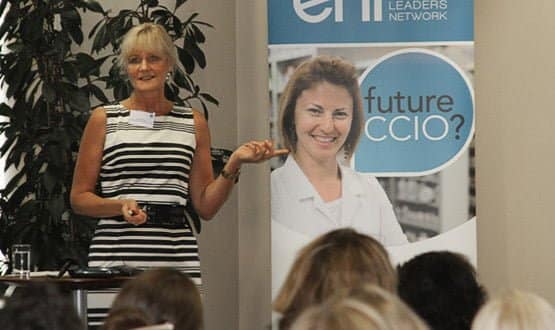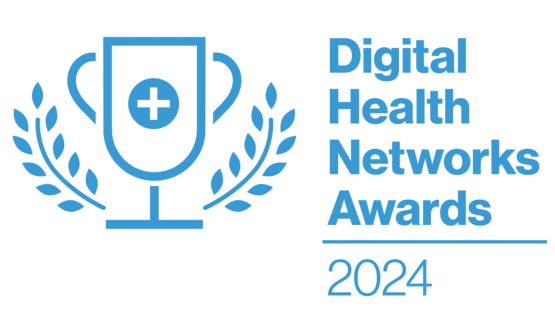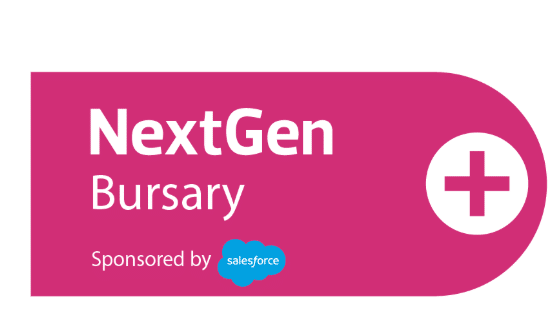CCIO profile: Fiona Stephens
- 18 September 2012

The range of professions and organisations covered by the role of chief clinical information officer continues to grow, and now includes a nurse at a community services provider.
Fiona Stephens is the CCIO at Medway Community Healthcare, a community interest company providing a wide range of community services in North West Kent in hospitals, care homes, hospices and people’s homes.
The role was formally approved by the CIC’s board this spring and is one that she combines with her board level position of clinical quality director – the professional lead for the nurses and therapists at Medway Community Healthcare and executive lead for patient safety, patient experience and clinical effectiveness. Oh, and she is the Caldicott Guardian too.
Backed by the board
Her interest in the CCIO post was piqued by two factors. The first was that the CIC is in the process of implementing a new community information system provided by Advanced Health and Care that includes a mobile system, iNurse.
“The contracting was being done by the business director with not a lot of input from the clinical directors,” she says. She was keen to see better – and earlier – input from clinicians to make sure the new system would meet their requirements.
Then along came the nursing informatics course developed by NHS Connecting for Health’s director of nursing Susan Hamer to spark nurses’ interest in informatics.
“It was not about becoming a computer geek but about the importance of information and how we, as members of the public, access information,” she says.
“I was quite stunned by what I found out. For example, 70% of people will access information about their health online before they even visit a doctor. It seemed clear to me we should be doing more about how we use information and how we make information available to our patients and clinicians.”
On the course, she was introduced to the CCIO Leaders Network and subsequently attended a half day seminar discussing the role of the CCIO. She decided that even though she did not have the IT qualification deemed important by people at the seminar, it was a role she should take on.
“I had a discussion with our managing director and we agreed it would fit well in my portfolio of responsibilities. We needed a bridge between IT implementation, how we use information, and the clinical aspects of information.”
She prepared a paper for the board and was greeted with unanimous backing. “I now have responsibility within my organisation,” she says.
Making IT work
Stephens’ first task was to get clinical engagement in the strategic roll-out of the community information system and the push to give clinicians who need it the hardware and software to be truly mobile.
“We want to roll it out over two years, but we need a system that meets the needs of very diverse services,” she says.
“We already had a clinical advisory group looking at standardising assessment tools and so on. They were interested but frustrated by what they saw as a lack of movement so we asked them to be the clinicians’ voice in rolling out the system.”
And this group has really got down to the nitty gritty. At one level, they have influenced decisions on hardware. For example, nurses in the out-of-hours service want iNurse provided in a mobile format on BlackBerry devices, whereas district nurses favour a tablet device.
“Tablets give them a bigger screen to work on and make it easier to input all the information from a visit without being too heavy and without getting in the way of their interaction with patients,” Stephens says.
On another level, the group has been instrumental in building in workflows that make care safer. “If someone inputs data incorrectly, for example test results get recorded against the wrong patient, the information automatically comes to me; so I can ask questions about whether patients were harmed by this. This is not something I think IT people would think about.”
Clinicians have started to voice their preferences for additional apps to add to the mobile system, such as NHS Evidence or the British National Formulary. “People feel engaged now in the decision making,” she says. “They might not get what they want straight away but at least they are able to understand the rationale.”
Asking the right questions
Stephens believes the introduction of the CCIO role has made a real difference, not just through the improved clinical engagement but also by giving her the authority to ask questions.
“I can ask the naïve questions about why the system cannot do x, y or z when it seems to me as a clinician that it should,” she says. “We have to accept that there are limitations from an IT perspective but I need to have them justified to me so that I can voice them to the teams.”
She agrees that her background in nursing is unusual for a CCIO in the UK – there is a variety of CNIO roles in the US and they are usually around similar remits of quality, safety and information to hers. But even in the US most CCIOs are doctors (CMIOs).
“I think it is a role that fits well in our organisation,” she says. “We are a community provider and most of our staff are nurses and therapists. Even the medical director here is not full time.
“But I see no reason why a nurse could not take on this role in an acute setting. My experience is that organisations need someone on the board to act as a bridge between the finance department, the IT lead and the clinicians.”




